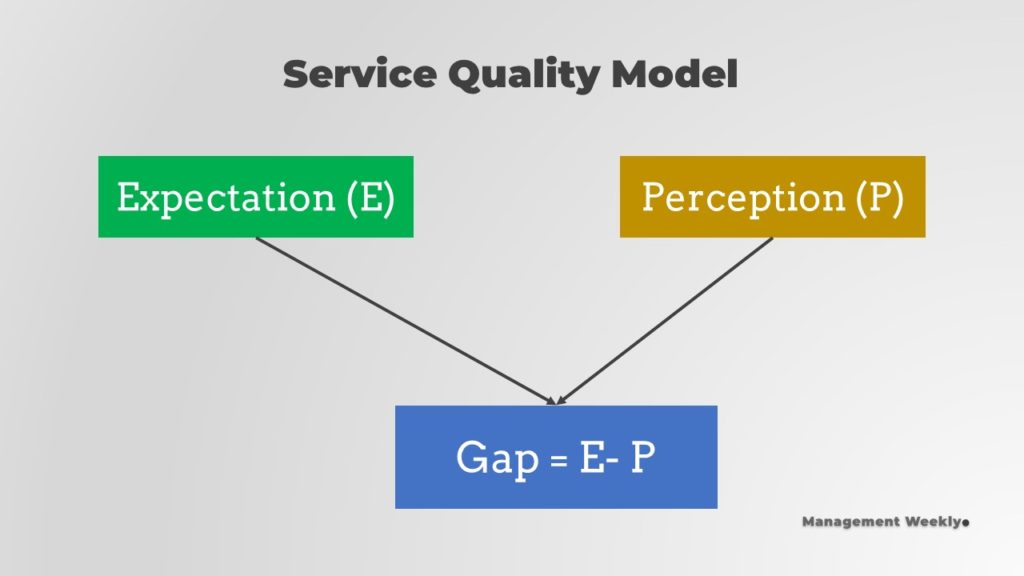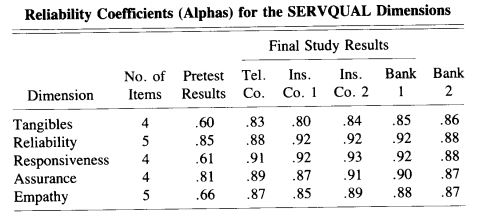What exactly is service quality and how do we measure it? This is an extremely tricky question, and the SERVQUAL questionnaire can help us answer it.
It is very difficult for firms to thrive, in a cut-throat business environment. One of the ways of differentiating yourself is through your service quality. Service quality can make or break any brand. Even if you have got the best product in the market, you need to back it up with an excellent service. High-quality service helps in the success of firms.
Contents
Why is service quality important?
Service quality is extremely important for firms that deliver services to their clients. It can increase customer satisfaction levels as well as it can help the firms achieve higher loyalty and profits(Minh et al., 2015). Service quality can be an indicator of what is going right or what is going wrong with your organization. It gives voice to the most important stakeholder of the organization – the customer. Firstly, we will look at an interesting case:
Rackspace is a web hosting company. If you have ever troubleshot our website you would know what kind of mess can be. A customer was on a call with the customer support team of Rackspace. Given the complexity of the problem, it was going to take a long time.
In the middle of this troubleshooting session, The customer care representative heard that the customer said to her colleague that she was feeling hungry. The customer support representative instantly ordered a pizza for the client. Unaware of the order, they were delightedly surprised. This helped reduce the customer’s anger towards the service provider. Additionally, it also helped them in solving the problem faster with renewed energy.
The SERVQUAL questionnaire for service quality
The SERVQUAL questionnaire is one of the most widely used surveys for capturing service quality. Parasuraman, Zeithaml, and Berry developed this scale in 1988. They found that there was no measure of service quality. Therefore, they attempted to developed a measure of service quality. Firstly, the customer feels the service quality. They also proposed that it was different from satisfaction.
Section A: In dissection, please provide some directions for the respondents. You may start by welcoming them to your survey and brief them about the objective of your study. Subsequently, you need to inform them how to interpret the questions. Also, tell them about how to respond to the questions. Generally, responses are taken on 5 point or 7-point scale. The original paper suggests we use a 7-point scale. You can have your responses ranging from strongly-disagree to strongly-agree or from points 1 to 7. 7 being the strongly-agree in that case. Here is a snapshot from the paper for your reference:
The survey is done in two parts:
- Expectation from the given service
- Perception of particular service received

SERVQUAL Questionnaire template
You may use this template to create your survey form. You may modify it for internal usage within your organization. However, if you want to use it for consulting or providing services to a 3rd party, please contact us.
Please help us by subscribing or following us on social media. Thank you!
A brief explanation of the SERVQUAL survey:
The SERVQUAL survey has following sections:
- Reliability
- Assurance
- Tangibles
- Empathy
- Responsiveness
The first section is on reliability and it has 5 questions. In this section, we check service delivery quality. The second section with 4 questions covers the skills and trustworthiness of the staff. Thirdly, we have the tangibles, which also has 4 questions. This section captures the physical attributes of the firm, employees, and the delivery environment. Fourthly, we come to the empathy section with 5 questions. In this section, we inquire about the level of empathy given to the customers. Fifthly, and finally, we have the responsiveness section. In this section, we have 4 questions that capture the ability to respond to customer queries and resolve their problems.
Each of these surveys exhibits the gaps in the five sections of the SERVQUAL questionnaire. These gaps provide us with areas to improve upon. For example, we get the feedback that the staff is not prompt enough in solving customer problems. In this case, we shall look into training them to improve customer service.
What are some of the criticisms of the SERVQUAL model?
- One of the problems with the concept of expectations is that is difficult to respond. Firstly, customers who have prior experience with the brand will behave differently than others. Secondly, they may not have an accurate memory of the experience. Thirdly, the expectations are dynamic and change over time and context.
- Some researchers have questioned the SERVQUAL Questionnaire. Firstly, the survey may capture the satisfaction of the customers and not service quality. Secondly, usage in different contexts may not yield the same result and should not be compared directly.
- It is a long questionnaire with 22+22 items or 44 items(questions). It can bore the participants. A shortened questionnaire called SERVPERF is the solution to this issue. This survey has half the questions by eliminating the expectation section altogether.
Is the SERVQUAL questionnaire reliable?
After all, this questionnaire has some major criticisms. In this light, should we still use it?
Firstly, this scale is usually used for marketing. Therefore, it is alright to have less than 100% precision. Most social sciences models work a certain degree of uncertainty. Secondly, many subsequent research papers published using this scale support the reliability of the scale.

SERVQUAL model is also known as RATER model. The name is derived from the acronym of the survey sections. It is also known as the gaps model.
Parasuraman, Valarie A. Zeithaml and Len Berry invented the SERVQUAL model and published it in 1988.
SERVQUAL survey is used to capture the service quality.

Kindly help i am having challenges in using the servqual template
this so amazing. i love it very much and willing to learn more of it to fully understand and use for my organisation,
So thankyou so much for this.